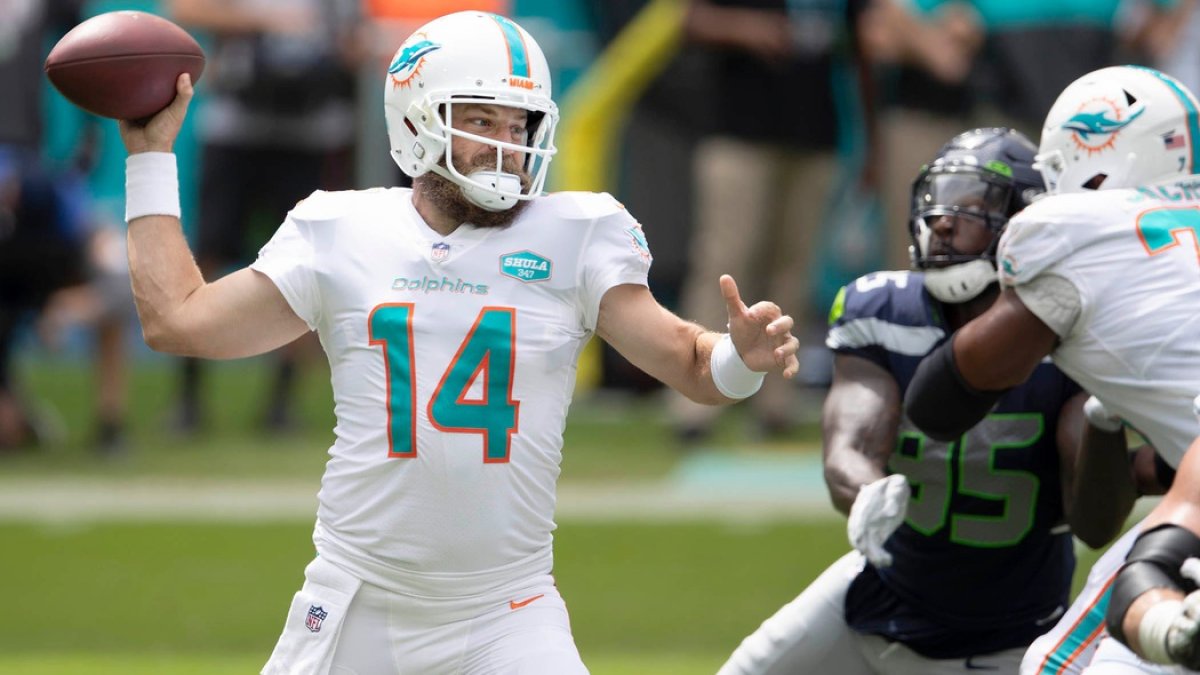Stacking is essential to success in DFS GPPs. The average user who submits a handful of lineups on any one DFS slate doesn’t stack nearly enough in their lineups. The art of stacking is a way to increase variance, which is the only option that offers enough upside to win a GPP tournament. An overlooked approach is the game-level stack, which takes not only a quarterback and pass-catching option but also runs it back with a pass-catcher or running back from the opposing team.
We see in our introductory article on stacking that if we hit on the correct quarterback and wide receiver to stack, a player from the opposing team is typically going to be worthwhile to pair with this combination to apply more lineup correlation into your roster builds.
This provides inherent upside to our lineups — if we hit on the correct quarterback, two or more additional lineup spots are typically hit on by the simple fact that they are highly correlated to our signal-caller's play. If your quarterback is a miss, the rest of your lineup is likely in a similar situation, as it is hard to pull off a quality finish in a GPP contest with a dud at the quarterback position.
Focusing on this approach of identifying quarterbacks who could be hits, we have built a model to project who is most likely to finish as the highest-scoring quarterback on the main slate based on fantasy projections, opponent-adjusted grades and betting market lines. Utilizing correlations for how fantasy points are distributed at the game level, we can then see the correct framework for how to approach roster construction for a game stack.
WEEK 5 REVIEW
We had our first slate breaking performance of 2020 — with Chase Claypool owned at 1.2% and putting up 45.6 DraftKings points. This causes some different builds with Claypool to rise to the top of DFS contests. The Kansas City team stack of Patrick Mahomes, Tyreek Hill and Travis Kelce was littered throughout the top 10. This was identified on my game stacks last week, with a run-it-back option of Henry Ruggs III looking like the perfect play.
But with Claypool breaking the slate, we didn’t see many condensed game stacks making it to the top. This was still the correct approach, highlighting how important the correct game stack is to DFS success. The Chiefs' big three was owned on just over 2% of lineups in the DraftKings Millionaire Maker contest. Adding in Ruggs would have dropped this percentage to .15%, creating the perfect core for Week 5.
The tricky thing about DFS is that we can maximize win probability as much as possible, but some weeks have one breakout performance that is required to finish at the top of DFS contests. If it wasn’t Claypool, the requirement would have been Brandin Cooks, who was a highlighted hit in our blowup series. Our approach through five weeks appears to be on.
2020 has brought a significant adjustment to game totals after increased scoring. The mean total for Week 6 has once again reset the highest mean for any one week since we began tracking such numbers in 2007. This should cause game-level stack ownership to be incredibly spread out. There is no obvious chalk, meaning that if you have conviction about a certain play or game to load up on that situation.
This model is low on some sides of games that appear to have worthwhile opportunities based solely on the total. Both Detroit versus Jacksonville and Houston versus Tennessee have high totals, but the Jacksonville and Houston sides are getting next to no recognition in our model. Detroit and Tennessee look like the only viable plays to utilize the quarterback position, but I am avoiding these games currently for DFS purposes.
Let’s dive into the best stacks for Week 6 based on our model predictions for games that could involve the highest-scoring players at each position.
HIGH-OWNED OPTIONS
GREEN BAY PACKERS @ TAMPA BAY BUCCANEERS
The market pushed this matchup to the highest total on the main slate. The three-point line movement seems to have found consensus, with 59% of the cash and 68% of the ticket percentages on the over. Our predictive models lean toward the under, which forces a pause on this being the full-on game stack most are projecting.

The Buccaneers' defense has quietly turned into one of the best units in the league, ranking first in our opponent-adjusted defensive grades. The Packers are also in the top half of the league, so points may not come in droves like most currently project.
Both offenses rank in the top 10 of our opponent-adjusted offensive grades, so this an interesting case to see which unit wins out. Siding with the market seems like a worthwhile approach, but this projects to be one of the highest owned game stacks on the main slate, which makes limiting exposure or fading all the more worthwhile.
Exclusive content for premium subscribers

WANT TO KEEP READING?
Dominate Fantasy Football & Betting with AI-Powered Data & Tools Trusted By All 32 Teams
Already have a subscription? Log in




 © 2025 PFF - all rights reserved.
© 2025 PFF - all rights reserved.